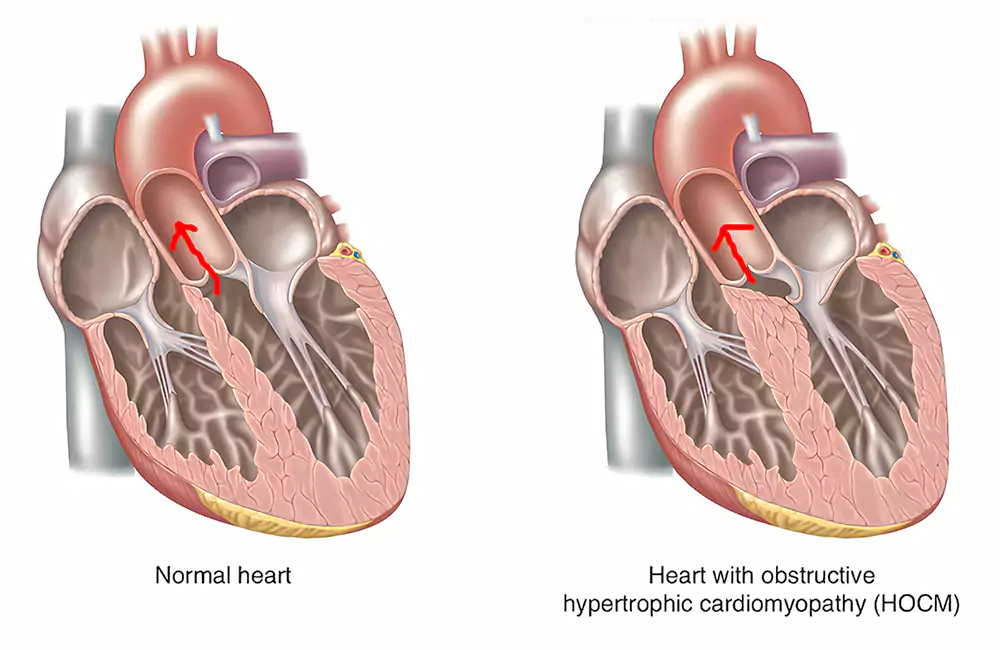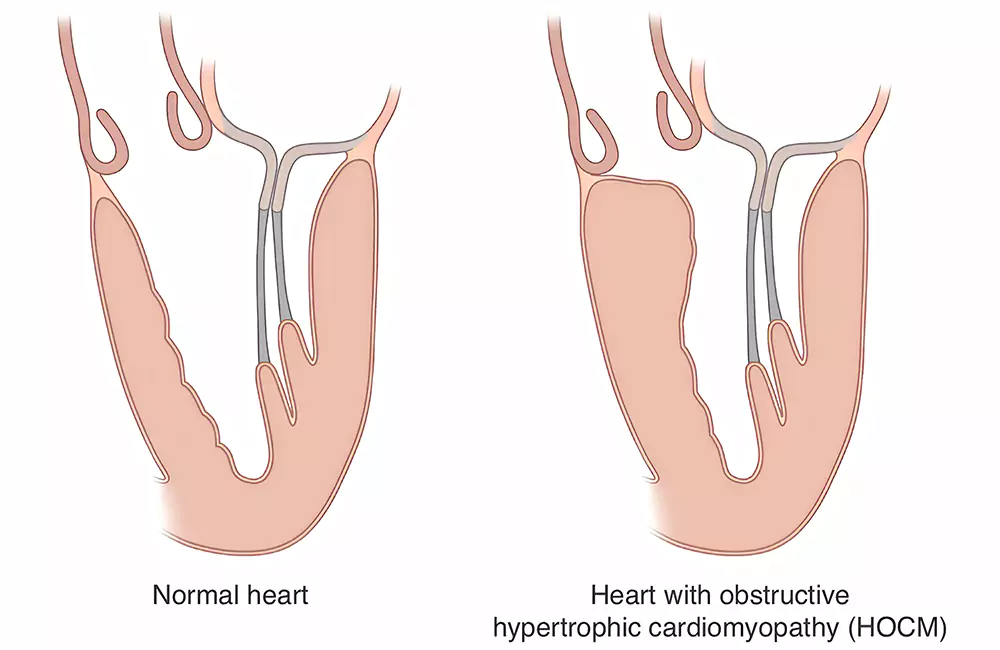


Hypertrophic obstructive cardiomyopathy thickens heart muscles, causing stiffness in the left ventricle and mitral valve changes. This condition, known as outflow tract obstruction, reduces blood flow from the left ventricle to the aorta. Symptoms include chest pain, breathing difficulties, dizziness, and irregular heartbeat. Hypertrophic non-obstructive cardiomyopathy reduces blood flow without full obstruction. Stiffness in the left ventricle lowers oxygen-rich blood supply to organs. Aortic valve dysfunction occurs when the left ventricle outflow tract narrows, causing leaks and blood flow back to the left atrium.
Hypertrophic obstructive cardiomyopathy can result from genetic changes, inheritance, high blood pressure, ageing, or unknown causes. Symptoms include chest pain, breathing difficulties, fainting, irregular heartbeat, and swelling in the lower body and neck veins. Risks include atrial fibrillation, blocked blood flow, mitral valve disease, dilated cardiomyopathy, fainting, sudden cardiac arrest, sudden death, and heart failure. Prompt medical evaluation is crucial if experiencing symptoms like breathing difficulties, rapid or irregular heartbeat, or chest pain.
There are several potential causes of hypertrophic cardiomyopathy, including, genetics: Hypertrophic cardiomyopathy can be inherited from your parents and passed on to your children. This occurs due to a defect in a gene responsible for the characteristics of the heart muscle. Numerous genes can contribute to the development of hypertrophic cardiomyopathy. The presence of a gene defect can lead to varying forms of the condition within the same family. Some individuals carrying the hypertrophic cardiomyopathy gene may never develop the disease. Other causes are high blood pressure, ageing, etc.
